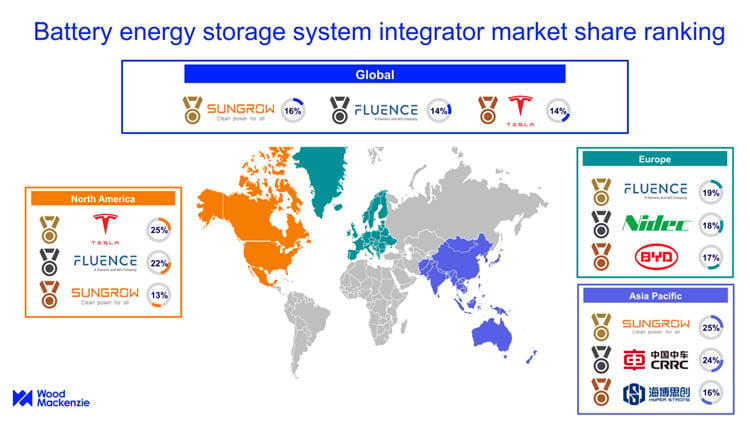
China Surpasses 1 Terawatt Solar Power Capacity: A Milestone in Sustainable Energy Transition
Overview of Solar Capacity Growth
China’s cumulative installed solar power capacity has exceeded 1 terawatt (TW), reaching 1.08 TW (1,080 gigawatts, GW) by the end of May 2025, according to the National Energy Administration (NEA). This represents a 56.9% year-on-year increase, highlighting China’s rapid advancement in renewable energy aligned with the Sustainable Development Goals (SDGs), particularly SDG 7 (Affordable and Clean Energy) and SDG 13 (Climate Action).
Power Generation Capacity and Solar’s Role
As of May 2025, China’s total power generation capacity stood at 3.61 TW, an 18.8% increase from the previous year. Solar power was the fastest-growing segment, driven by record-breaking installations during the first five months of the year. This growth supports SDG 9 (Industry, Innovation, and Infrastructure) by fostering sustainable industrialization and innovation in clean energy technologies.
Record Installations in Early 2025
- From January to May 2025, new solar installations totaled 197.85 GW, marking a 388.03% increase compared to the same period in 2024.
- In May alone, China added 92.92 GW of new solar capacity, a 105.48% increase from April and the highest monthly installation figure on record.
Government Policies Driving Growth
The surge in solar capacity is attributed to favorable government policies, including:
- Support for distributed solar power systems.
- Mechanisms enabling renewable energy participation in electricity market trading.
These measures have accelerated installations ahead of anticipated policy changes in the second half of 2025, demonstrating China’s commitment to SDG 12 (Responsible Consumption and Production) and SDG 11 (Sustainable Cities and Communities).
Historical Development of China’s Solar Sector
- 2010: China reached its first 1 GW of installed solar capacity under the Golden Sun Program, initiating the distributed solar segment.
- 2011–2012: Following trade tensions with the US and Europe, China focused on domestic support, promoting utility-scale projects primarily in the northwest, reaching 10 GW by mid-2013.
- 2013–2017: The Top-Runner Program enhanced technological innovation and efficiency, resulting in a tenfold increase to over 100 GW by June 2017.
- 2025: China achieves an unprecedented global milestone of 1 TW installed solar capacity.
This progression underscores China’s alignment with SDG 8 (Decent Work and Economic Growth) by fostering sustainable economic development through green energy industries.
Future Outlook and Challenges
Despite the impressive growth, analysts caution that the rapid expansion may slow in the second half of 2025 as the current policy-driven momentum eases. Market research firms have issued cautious forecasts, anticipating a potential decline in installation rates. This scenario highlights the need for sustained policy support to maintain progress toward SDG 7 and SDG 13.
Conclusion
China’s achievement of surpassing 1 TW of solar power capacity represents a significant contribution to global sustainable development efforts. The country’s strategic policies and rapid deployment of solar technologies exemplify progress toward multiple Sustainable Development Goals, including affordable clean energy, climate action, innovation, and sustainable economic growth. Continued commitment and adaptive policies will be essential to sustain this trajectory and address forthcoming challenges in the renewable energy sector.
1. Sustainable Development Goals (SDGs) Addressed or Connected
- SDG 7: Affordable and Clean Energy
- The article discusses China’s rapid expansion of solar power capacity, highlighting the growth of renewable energy sources.
- SDG 13: Climate Action
- The transition to solar energy supports efforts to reduce greenhouse gas emissions and combat climate change.
- SDG 9: Industry, Innovation and Infrastructure
- The article mentions technological innovation and efficiency improvements in solar power deployment.
2. Specific Targets Under Those SDGs Identified
- SDG 7: Affordable and Clean Energy
- Target 7.2: Increase substantially the share of renewable energy in the global energy mix.
- Target 7.a: Enhance international cooperation to facilitate access to clean energy research and technology.
- SDG 13: Climate Action
- Target 13.2: Integrate climate change measures into national policies, strategies, and planning.
- SDG 9: Industry, Innovation and Infrastructure
- Target 9.5: Enhance scientific research, upgrade technological capabilities of industrial sectors.
3. Indicators Mentioned or Implied to Measure Progress
- Installed Solar Power Capacity (GW or TW)
- The article provides data on cumulative installed solar capacity (e.g., 1.08 TW by May 2025), which is a direct indicator of renewable energy expansion (related to SDG 7.2).
- Year-on-Year Growth Rates (%)
- Growth percentages such as 56.9% year-on-year increase in solar capacity and 388.03% increase in new installations indicate progress and momentum in clean energy deployment.
- New Solar Installations (GW per month or period)
- Monthly and periodical installation figures (e.g., 92.92 GW in May 2025) serve as indicators of ongoing capacity additions.
- Policy Support and Market Mechanisms
- Though qualitative, the article implies the existence of policies and market mechanisms facilitating renewable energy growth, which can be monitored as part of SDG 13.2 and 7.a indicators.
4. Table: SDGs, Targets and Indicators
| SDGs | Targets | Indicators |
|---|---|---|
| SDG 7: Affordable and Clean Energy |
|
|
| SDG 13: Climate Action |
|
|
| SDG 9: Industry, Innovation and Infrastructure |
|
|
Source: pv-magazine.com







